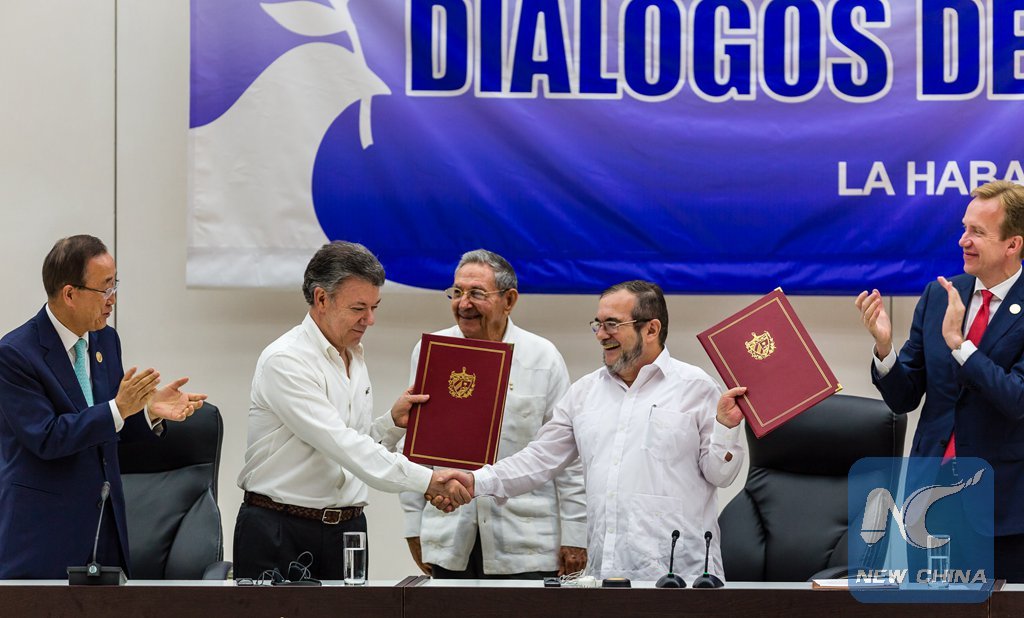The main leftist rebel group in Colombia, the Farc, has ordered all its fighters to observe a ceasefire from midnight local time (05:00 GMT Monday).
The ceasefire brings to an end the group's 52-year-old war, one of the world's longest insurgencies, after four years of peace talks in Cuba.
The final peace agreement will be signed in the next few weeks.
Farc leader Rodrigo Londono, known as Timoleon Jimenez or Timochenko, gave the order to stop firing.
"Never again will parents be burying their sons and daughters killed in the war,'' Timochenko told journalists. "All rivalries and grudges will remain in the past," he said.
Colombian President Juan Manuel Santos signed a decree earlier to halt military operations against the Farc, also from midnight.
"One of the country's most painful chapters" was coming to an end, he said in a tweet on Sunday, calling the ceasefire a "historic step".
Crucial milestone: Analysis by Will Grant, BBC News, Havana
In one sense, the Farc's announcement of a total ceasefire is purely procedural. In another, it is a historic moment towards a lasting peace. It is procedural in that the bilateral ceasefire had already been agreed and there has in effect been a truce on the ground for several months.
But the definitive ceasefire was supposed to come into force the day after the final peace agreement was signed by President Santos and the leader of the Farc, Timoleon Jimenez - an event expected in Cartagena at the end of September. This moves that forward in a gesture of goodwill on both sides.
It is historic in that - finally - it brings to an end more than 50 years of conflict which left an estimated 260,000 people dead and millions internally displaced. These milestones are crucial for the Colombian peace process.
Perhaps more important is what comes next: a referendum on the agreement in early October. That will decide the fate of the years of negotiation in Havana and, in the process, the political futures of both President Santos and the Farc.
A peace agreement was announced on Wednesday in Havana, at the peace talks.
Farc fighters will ratify the accord in September and a Colombian referendum on the agreement will follow on 2 October.
Under the terms of the agreement, the Farc (the Spanish acronym for the Revolutionary Armed Forces of Colombia) will give up its armed struggle and join the legal political process.
In March Colombia announced the start of peace negotiations with the second largest rebel group, the National Liberation Army (ELN), but the rebels have yet to meet the government's precondition of releasing all of their hostages and stop all kidnapping.
The Farc's 52-year fight
1964: Set up as armed wing of Communist Party
2002: At its height, with an army of 20,000 fighters controlling up to a third of the country
2008: The group's worst year, when it suffered a series of bitter defeats
2012: Start of peace talks in Havana
2016: Definitive ceasefire
BBC.com





